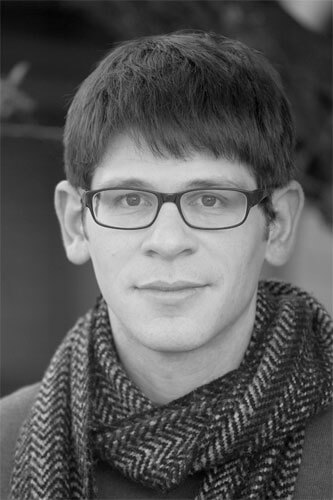Lucas Foglia grew up on a small family farm in New York and currently lives in San Francisco. His work focuses on the intersection of human belief systems and the natural world. He recently published his third book of photographs, Human Nature, with Nazraeli Press. Foglia exhibits internationally, and his prints are in notable collections including International Center of Photography, San Francisco Museum of Modern Art, and Victoria and Albert Museum. He photographs for magazines including Bloomberg Businessweek, National Geographic Magazine, and The New York Times Sunday Magazine. Foglia also collaborates with non-profit organizations including Sierra Club, The Nature Conservancy, and Winrock International.
Source: lucasfoglia.com
A Natural Order
I grew up with my extended family on a small farm in the suburbs of New York City. While malls and supermarkets developed around us, we farmed and canned our food, and heated our house with wood. We bartered the plants we grew for everything from shoes to dental work. But, while my family followed many principles of the back-to-the-land movement, by the time I was eighteen we owned three tractors, four cars, and five computers. This mixing of the modern world into our otherwise rustic life made me curious to see what a completely self-sufficient way of living might look like.
From 2006 through 2010, I traveled throughout the southeastern United States befriending, photographing, and interviewing a network of people who left cities and suburbs to live off the grid. Motivated by environmental concerns, religious beliefs, or the global economic recession, they chose to build their homes from local materials, obtain their water from nearby springs, and hunt, gather, or grow their own food.
All the people in my photographs aspire to be self-sufficient, but no one I found lives in complete isolation from the mainstream. Many have websites that they update using laptop computers, and cell phones that they charge on car batteries or solar panels. They do not wholly reject the modern world. Instead, they step away from it and choose the parts that they want to bring with them.
Frontcountry
The American West is famous for being wild, even though its rural areas have been settled for generations. The regions I photographed between are some of the least populated in the United States. In rural Nevada, there are still twice as many cows as there are people. While the ranchers I met were struggling to survive the economic recession and years of drought, almost anyone could get a job at the mines. Coal, oil, natural gas, and gold were booming.
Ranching and mining in the American West have had parallel histories and a common landscape. Cowboys and ranching culture are the chosen representatives of the region. Men on horseback ride through countless movies. Their images are printed on license plates and tourist souvenirs. But, the biggest profits are in mining. Though miners haven't found any raw nuggets for generations, the American West remains one of the largest gold producing regions in the world. Companies are digging increasingly bigger holes to find smaller deposits, leaving pits where there once were mountains.
When I first visited, I expected cowboys to be nomads, herding animals on the edge of wilderness. I quickly learned that most ranchers have homes with mortgages. I also learned that all mines close eventually. When a mine closes, the land is scarred. The company leaves and people have to move. Miners are the modern-day nomads, following jobs across the country.
